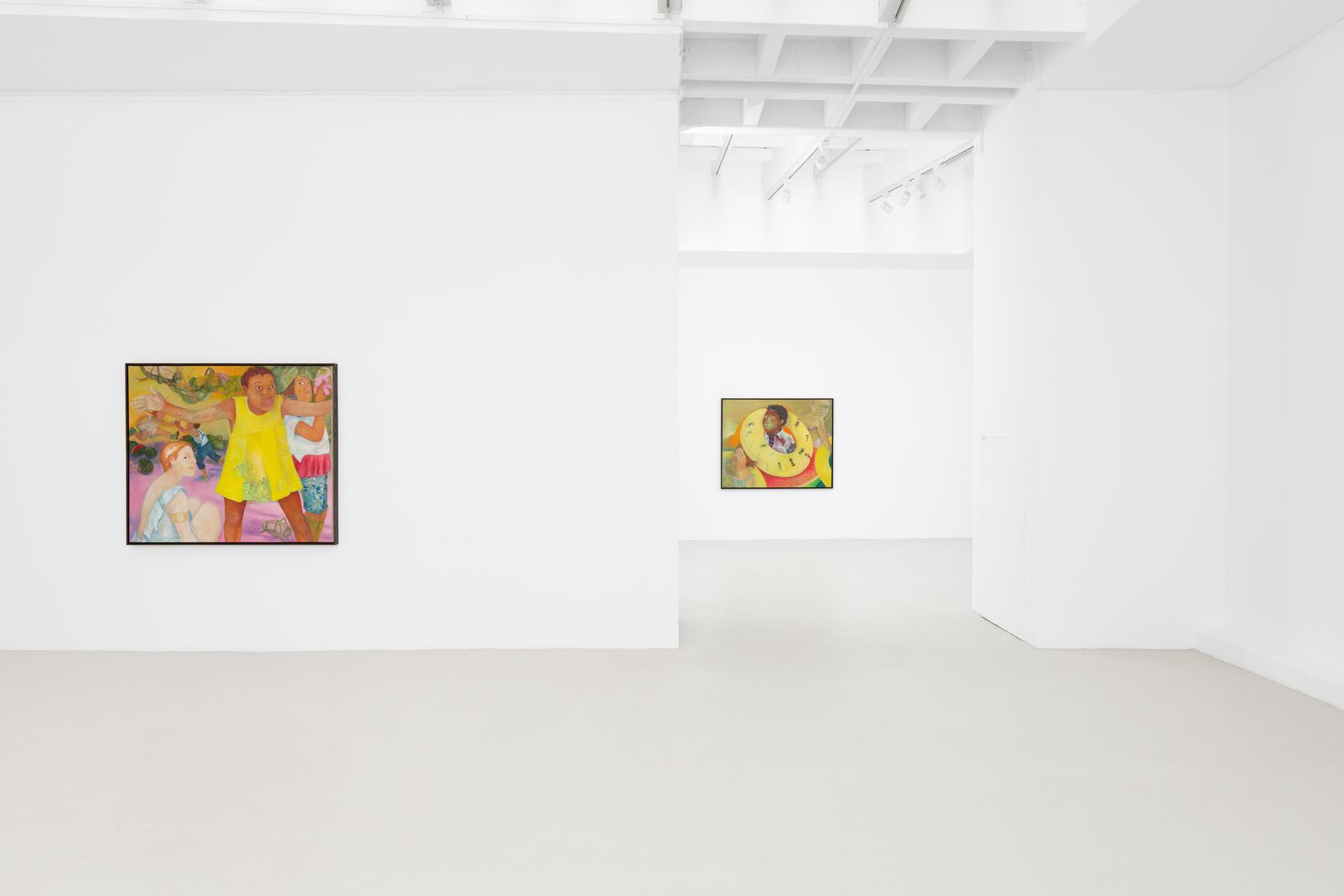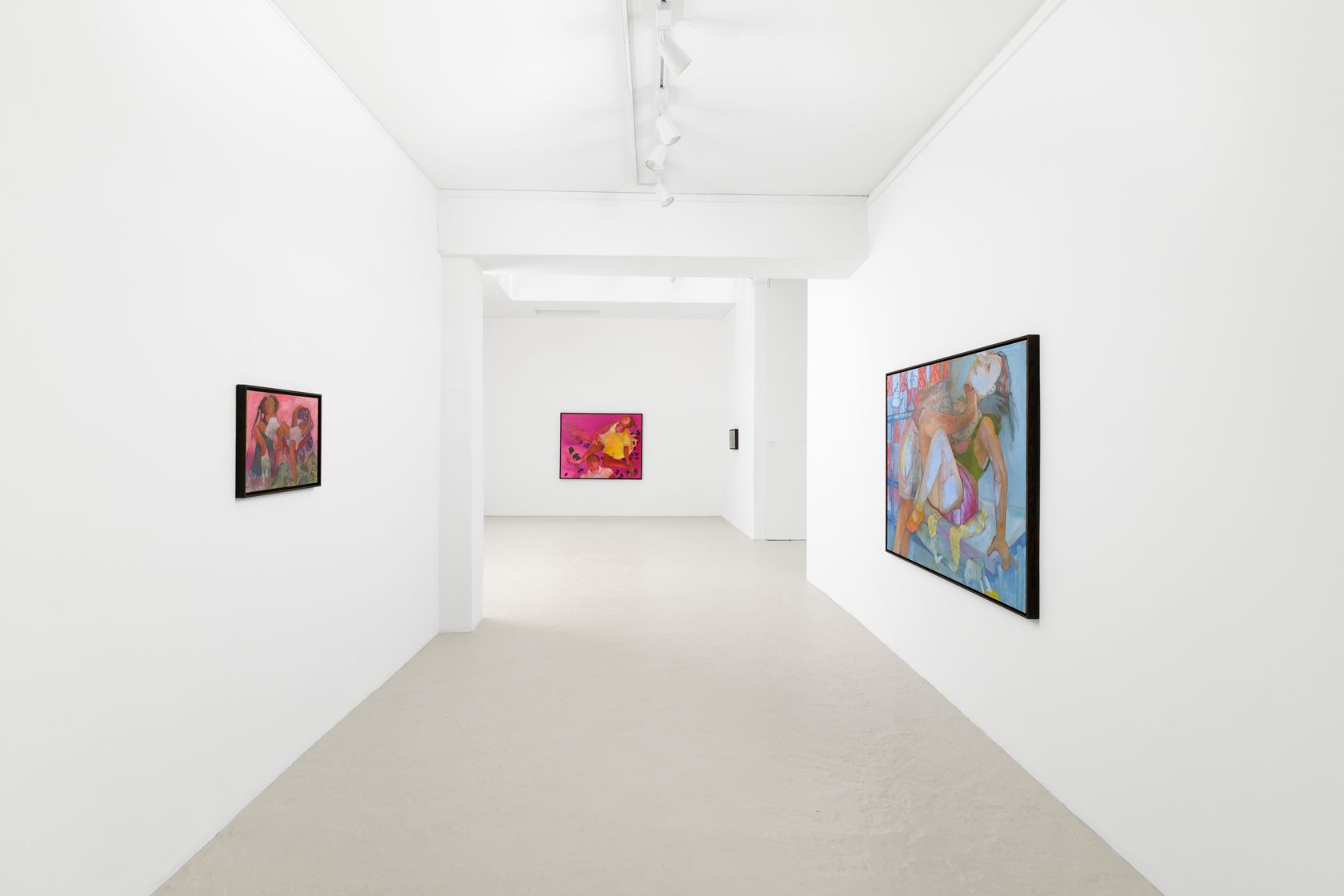-
 1/9
1/9
Philemona Williamson, The Borders of Innocence
-
 2/9
2/9
Philemona Williamson, The Borders of Innocence
-
 3/9
3/9
Philemona Williamson, The Borders of Innocence
-
 4/9
4/9
Philemona Williamson, The Borders of Innocence
-
 5/9
5/9
Philemona Williamson, The Borders of Innocence
-
 6/9
6/9
Philemona Williamson, The Borders of Innocence
-
 7/9
7/9
Philemona Williamson, The Borders of Innocence
-
 8/9
8/9
Philemona Williamson, The Borders of Innocence
-
 9/9
9/9
Philemona Williamson, The Borders of Innocence
In her more than four decades-long distinguished career, the American artist Philemona Williamson has created an evocative and compelling body of work that she describes as “visual poems.” Through the veil of personal memory, Williamson’s opaque narratives recall the beauty, drama, and vagaries of innocence. In her paintings, youthful bodies, toys, flora and fauna float and frolic in vibrantly colored dreamscapes. But memory is an unreliable narrator and Williamson’s captivating stories are fragmented, mysterious, and open to interpretation.
Williamson has lived and worked in and around New York City and northern New Jersey her entire life. She developed her artistic talent as an adolescent. In 1969, she began studying art at Bennington College in Vermont. There she realized that American abstraction was emphasized yet she was more interested in working with the figure. She went on to graduate study at New York University where her interest in figurative and narrative painting began to flourish. She absorbed the work of historical artists such as Piero della Francesca, Hieronymus Bosch, Jacques-Louis David, Gustave Courbet, Diego Rivera, Paula Rego and Benny Andrews who informed her unique vision. As Williamson’s career developed, she taught art at several American universities, received fellowships, numerous grants, and awards. But Williamson is first and foremost a painter and for the last thirty-five years her works have been featured in solo and group exhibitions in museums and galleries across the United States.
As an African American artist working in the United States, Williamson faced the pressure to engage with the politics and history of race and racism. Although she certainly experienced America’s divisive racial climate, her multilayered work is rooted in the complex experience of her unique childhood. Williamson’s memories have inspired her to examine common themes of adolescence that transcend racial and gender boundaries. She states…
“I think of people of color as not confined or defined by our history. I see our history of resilience and perseverance as the inspiration that makes me want to paint and develop my own narratives. It’s a starting point for a multitude of possibilities to create stories that reach far beyond our recent history into a future full of possibilities.”
Williamson’s unique experiences inform the stories she tells. Much of her content is inspired by the 11 formative years she spent in a luxurious New York City home where her mother and father were live-in employees. Young Philemona was both embraced and valued by the wealthy and eccentric Greek family she lived with. The older teenage daughters treated her like their own little sister. In Williamson’s memory, the years she spent there were magical, filled with music, play acting, and lots of family drama. This unusual world of her youth continues to inspire her idiosyncratic compositions. However, her paintings are not fully realized narratives or illustrations of her past. They are fragments of memories and fantasies that form their own compelling yet destabilizing universe.
Long interested in dance and choreography, Williamson often starts her compositions with the gesture of a figure. These dynamic movements—frequently awkward, confused, or struggling—capture the spirit of an emotion. The painting then evolves around the gesture in a non-linear fashion. In her painting Sweet Dreams (2010), a young female figure is splayed on her back upending a teacup and spilling milk while her companion leans on a three-tiered cake stand. In this scenario, even the cupcakes are askew.
Williamson’s canvases often challenge the viewer to resist the judgement that adults might impose on the figures and instead see their sensuality as part of the transitional and unstable nature of adolescence. Throughout her body of work figures of various hues, unspecified ages, and non-binary genders engage in physical interplay that often borders on the erotic. Her work raises essential questions. Is the taboo notion of adolescent sexuality part of her narrative? Or are these ideas a social construct? In works such as Pink and White Honey (2017), Embroidered Dream (2021), and Here I Hold Becoming (2020) the physicality of the figures’ interactions hints a brewing adolescent sensuality.
In addition to the enigmatic figures that interact in Williamson’s compositions, objects from her collection of vintage toys, dolls, children’s clothing, and other decorative objects frequently appear as characters. Works such as Dislocation and Stored Memory (2020) depict dolls and toys in awkward poses involved in narratives that draw upon the caprices of memory. What stories do these toys tell? Williamson’s adolescent characters are often depicted playing with toys, revealing the push and pull between childhood and adolescence. In Red Buckled Shoe (2014) a young girl holds a Topsy-Turvy doll that is black on one half and white on the other. A recurring character in Williamson’s body of work, the Topsy-Turvy doll is a nineteenth-century American folk toy that drew on the power dynamics of race, slavery, and beauty in the nineteenth century. Red Buckled Shoe, awash in blue, calls to my mind Toni Morrison’s poignant book The Bluest Eye (1970). Morrison examined how American standards of beauty that valued whiteness also fostered self-hatred and longing in young Black girls. Similarly, Williamson’s figure and the doll enact the tensions of identity that might surface as we navigate our thoughts, dreams, and fears through play.
The dynamic compositions in Philemona Williamson’s universe map the grey areas and opaque memories of adolescence in lush color and exuberant form. Her characters are wholly self-contained, offering open ended narratives and leaving more questions than answers. Although Williamson is a memory keeper, she understands its vagaries and allows her characters, both animate and inanimate, to keep their own secrets.
Dr. Adrienne L. Childs